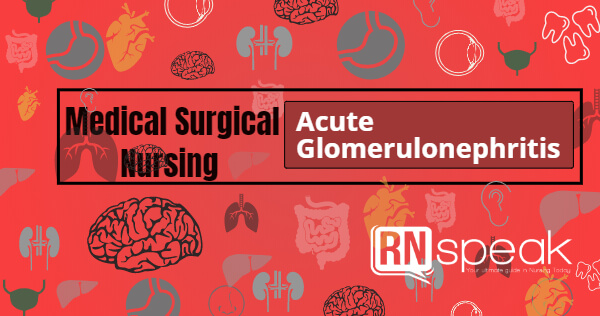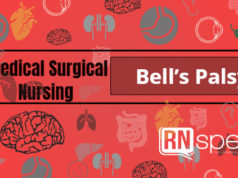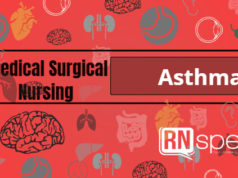A kidney is a reddish-brown, bean-shaped organ with a smooth surface. It is about 12 cm x 6 cm x 3 cm (length-width-thickness) in dimension in an adult. It is enclosed by a tough, fibrous capsule known as the tunic fibrosa. There are two kidneys in a normal human body. They are located on either side of the vertebral column in a depression high on the posterior wall of the abdominal cavity. Its functions include the excretion of metabolic waste via urine, helps regulate the formation of Red Blood Cells (RBC), helps regulate blood pressure, and aids in the absorption of calcium ions.
A glomerulus is a red corpuscle (Malpighian) composed of tangled cluster of blood capillaries. This is surrounded by a thin-walled, saclike structure called glomerular capsule (Bowman’s capsule).
Acute Glomerulonephritis (AGN) is a group of kidney diseases in which it is manifested by inflammation of the glomeruli as a defensive reaction to infection elsewhere in the body.
Acute Glomerulonephritis
Clinical Manifestations
1. Urine and characteristics:
- Proteinuria
- Hematuria
- Oliguria
2. Fluid imbalance:
- Edema of extremities
- Puffiness of the face
3. Circulatory abnormalities:
- Hypertension
- Headaches
- Anemia from losing RBCs in the urine
Complications
1. Circulatory problems:
- Congestive Heart
- Hypertension
- Endocarditis
2. Neurologic problems:
- Hypertensive encephalopathy
- Seizures
3. End-Stage Renal Disease
4. Fluid and electrolyte imbalance:
- Hyperkalemia
- Hyperphosphatemia
- Hypervolemia
Nursing Interventions
1. Assessment
- Obtain history focusing on immunologic issues like the presence of SLE and infection (past and present).
- Do physical examination, noting for the presence of edema, hypertension, and hypervolemia as characterized by increased jugular venous pressure and engorged neck veins.
- Monitor cardiac and serum laboratory values.
- Do routine laboratory workouts like urinalysis to assess for the presence of blood and protein.
2. Therapeutic Interventions
a. Monitor kidney functioning
- vital signs
- fluid intake and output
- daily weight
b. Monitor signs of the progressing problem
- pulmonary artery pressure
- central venous pressure
- signs and symptoms of CHF
- signs and symptoms of hypertensive encephalopathy
c. Watch out for dietary restrictions like that of salt
d. Administer ordered medications and watch out for reactions
- antihypertensives
- diuretics
- H2 blockers
- Antibiotics
e. Encourage bed rest until signs of improvement shows
- BUN and creatinine
- Hypertension
f. Watch out for possibilities of seizure
3. Health Teachings
- Instruct to report and treat any type of infection promptly.
- Instruct to seek medical intervention for signs of decreasing urinary output.
- Encourage to have follow-up check-ups and monitoring even after recovery of:
-
- blood pressure
- urinary protein
- BUN and creatinine








